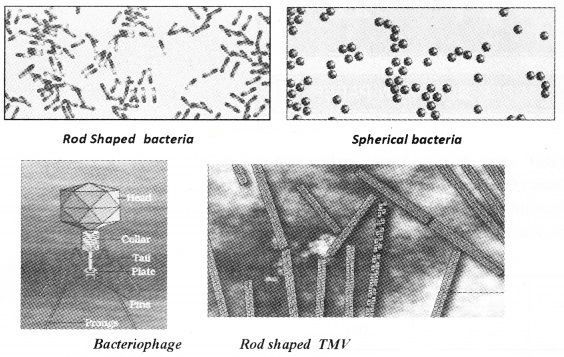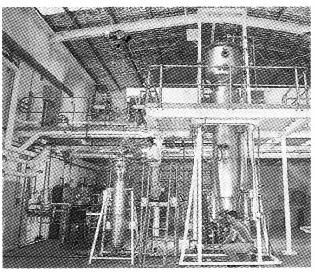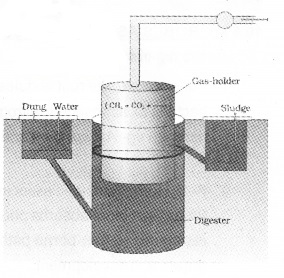Plus Two Zoology Notes Chapter 7 Microbes in Human Welfare is part of Plus Two Zoology Notes. Here we have given Plus Two Zoology Notes Chapter 7 Microbes in Human Welfare.
| Board | SCERT, Kerala |
| Text Book | NCERT Based |
| Class | Plus Two |
| Subject | Zoology Notes |
| Chapter | Chapter 7 |
| Chapter Name | Microbes in Human Welfare |
| Category | Plus Two Kerala |
Kerala Plus Two Zoology Notes Chapter 7 Microbes in Human Welfare
Microbes In Household Products

The traditional drink ‘Toddy’ is made by fermenting sap from palms.


Microbes In Industrial Products
Microbes are used to synthesise a number of products such as beverages and antibiotics. These are produced in large scale by using large vessels called fermentors.
1. Fermented Beverages:
Fermentors:

Fermentation plant:

Yeasts ( brewer’s yeast-Saccharomyces cerevisiae) is used for the production of beverages like wine, beer, whisky, brandy or rum.
Different type of alcoholic drinks are made depending on the type of the raw material used for fermentation and the type of processing.
| Wine and beer are produced without distillation | Whisky, brandy and rum are produced by distillation of the fermented broth |
2. Antibiotics:
Antibiotics are chemical substances, they are isolated form some microbes and used to kill or destroy the growth of other (disease-causing) microbes.
Penicillin was the first discovered antibiotic from the mould Penicillium notatum. Alexander Fleming while working on Staphylococci bacteria, observed a mould growing in one of his unwashed culture plates around which Staphylococci could not grow. It was due to a chemical produced by the mould and he named it as Penicillin.
Chain and Florey developed penicillin for commercial use. This antibiotic was used to treat American soldiers wounded in World War II. Fleming, Chain and Florey were awarded the Nobel Prize in 1945, for this discovery. Many antibiotics are used to treat diseases such as plague, whooping cough, diphtheria leprosy etc.
3. Chemicals, Enzymes and other Bioactive Molecules:
- Aspergillus niger(a fungus)- citric acid
- Acetobacter aceti(a bacterium) – acetic acid
- Clostridium butylicum (a bacterium)- butyric acid
- Lactobacillus (a bacterium)- lactic acid
- Yeast (Saccharomyces cerevisiae)- ethanol
1. Lipases:
They are used in detergent, helpful in removing oily stains from the laundry.
2. Streptokinase:
It is obtained from bacterium Streptococcus used as a ‘clot buster’ for removing clots from the blood vessels of patients.
3. Cyclosporin A (Immunosuppressive agent):
It is produced by the fungus Trichodermapolysporum. It is helpful to patients subjected to organ-transplant.
4. Statins:
It is obtained from yeast Monascus purpureus used to lower blood-cholesterol level It acts by competitively inhibiting the enzyme responsible for synthesis of cholesterol.
Microbes In Sewage Treatment
The wastewater generated in cities and towns contain large quantity of human excreta and waste materials called as sewage. It contains organic matter and microbes. It is treated in sewage treatment plants (STPs). It is done by two stages.
Primary treatment:
It is the removal of large and small particles from the sewage through filtration and sedimentation.; Initially, floating debris is removed by sequential filtration. Then the grit (soil and small pebbles) are removed by sedimentation. All solids that settle form the primary sludge, and the supernatant forms the effluent.
The effluent ready for secondary treatment:
Secondary treatment:

An aerial view of sewage plant:

Secondary treatment or Biological treatment:
The primary effluent is passed into large aeration tanks that is agitated and air is pumped into it. It results the vigorous growth of useful aerobic microbes into floes (bacteria associated with fungal filaments forms mesh like structures).
The growing microbes consume the organic matter in the effluent. It reduces the BOD (biochemical oxygen demand) of the effluent.
This treatment is continued till the BOD is reduced. After reducing the BOD, the effluent is passed into a settling tank where the bacterial ‘floes’ are allowed to sediment. This sediment is called activated sludge.
A small part of the activated sludge is pumped back into the aeration tank to.serve as the inoculum. The remaining major part of the sludge is pumped into large tanks called anaerobic sludge digesters. Here the bacteria and the fungi are digested. This process releases gases such as methane, hydrogen sulphide and carbon dioxide.
These gases form biogas and used as source of energy Later the effluent is released into natural water bodies like rivers and streams.
The Ministry of Environment and Forests has initiated Ganga Action Plan and Yamuna Action Plan to save these major rivers of our country from pollution.
Microbes In Production Of Biogas
Bacteria which grow anaerobically on cellulosic material, produce large amount of methane along with CO2 and H2. They are called as methanogens. eg Methanobacterium.
These bacteria are commonly found in the anaerobic sludge during sewage treatment and in the rumen (a part of stomach) of cattle.
The excreta (dung) of cattle is rich in these bacteria. It is used for generation of biogas, commonly called gobar gas.
The biogas plant consists of a concrete tank (10 – 15 feet deep) in which bio-wastes are collected and a slurry of dung is fed. The biogas plant has an outlet, which is connected to a pipe to supply biogas to nearby houses. The spent slurry is removed through another outlet and used as fertiliser.
A typical biogas plant:

The biogas thus produced is used for cooking and lighting.
| The technology of biogas production was developed in India by the joint efforts of Indian Agricultural Research Institute (IARI) and Khadi and Village Industries Commission (KVIC). |
Microbes As Biocontrol Agents
Biocontrol is controlling of plant diseases and pests by biological methods instead of using insecticides pesticides and weedicides.
Biological control of pests and diseases:
In agriculture, natural predation is practiced instead of using chemicals. So it is called sustainable agriculture
1. The beetle with red and black markings – the Ladybird, and Dragonflies are useful to eliminate aphids and mosquitoes, respectively.
2. Bacillus thuringiensis is used to control butterfly caterpillars is an example of microbial biocontrol. Here cry gene of bacteria introduced into cotton plant and it is called as Bt cotton.
If these plants are eaten by the insect larvae. In the gut of the larvae, the oxin is released and the larvae get killed.
3. Trichoderma species are free-living fungi that are very common in the root ecosystems. They are effective bio control agents of several plant pathogens.
4. Baculoviruses are pathogens that attack insects and other arthropods.
5. The genus Nucleopolyhedrovirus are species-specific and have narrow spectrum insecticidal applications
This is better in the area having beneficial insects that are coming under integrated pest management (IPM) programme.
Microbes As Biofertilisers
1. For example, the root nodules of leguminous plants have the symbiotic association of Rhizobium. These bacteria fix atmospheric nitrogen which is used by the plant as nutrient. Other bacteria can fix atmospheric nitrogen eg- Azospirillum and Azotobacter( free-living in the soil) enriching the nitrogen content of the soil.
2. Fungi form symbiotic associations with plants (mycorrhiza). The genus Glomus form mycorrhiza. The fungal symbiont absorbs phosphorus from soil and passes it to the plant. In addition to these plants are resistance to root-borne pathogens, tolerance to salinity and drought, and an overall increase in plant growth and development.
3. Cyanobacteria which can fix atmospheric nitrogen, eg. Anabaena, Nostoc, Oscillatoria, etc. In paddy fields, cyanobacteria serve as an important biofertiliser. These add organic matter to the soil and increase its fertility. Biofertilisers are used to reduce dependence on chemical fertilisers.
We hope the Plus Two Zoology Notes Chapter 7 Microbes in Human Welfare help you. If you have any query regarding Plus Two Zoology Notes Chapter 7 Microbes in Human Welfare, drop a comment below and we will get back to you at the earliest.
